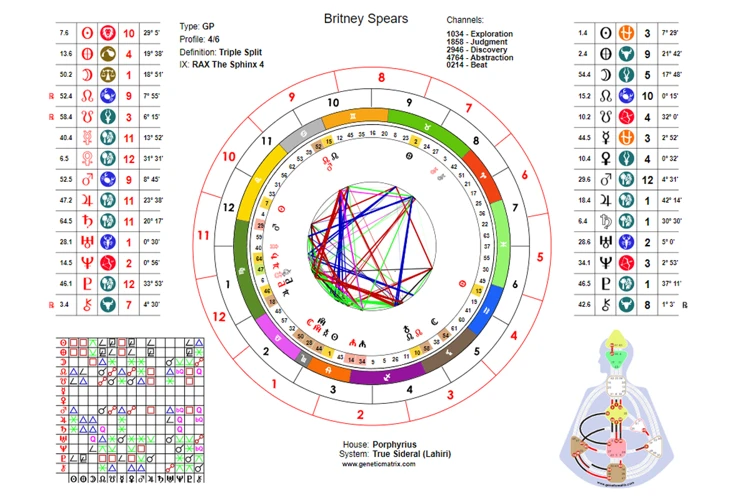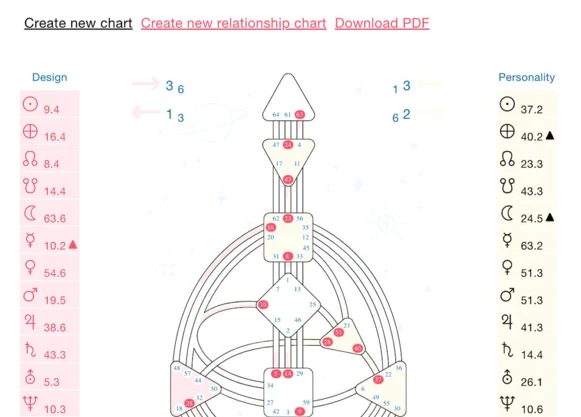Analyzing Composite Charts for Family Dynamics: Exploring the Secrets of Astrological Patterns
Unveiling the intricate dynamics within a family is no small task. However, with the help of astrology, we can gain valuable insights into the unique connections and patterns that exist within family units. In this comprehensive guide, we will delve into the fascinating world of composite charts and how they can be used to analyze family dynamics. By identifying family patterns, examining key planetary aspects, and interpreting composite houses, we will unlock a deeper understanding of the intricate web of relationships within a family. So, let us embark on this astrological journey, where we will uncover the hidden secrets and mysteries that lie within the composite charts of families.
What are Composite Charts?

Composite charts are a powerful astrological tool used to analyze the dynamics and energy of relationships. These charts are created by combining the birth charts of two or more individuals to create a single chart that represents the relationship as a whole. The composite chart is like a snapshot of the relationship, revealing its strengths, challenges, and overall purpose. It provides valuable insights into the dynamics between individuals, highlighting areas of compatibility and potential conflict. By blending the planetary positions, aspects, and houses from each individual’s birth chart, the composite chart offers a unique perspective on the relationship itself – almost like a separate entity with its own personality and characteristics. This tool is particularly useful when analyzing family dynamics, as it allows us to understand the intricate connections and patterns within the family unit. To learn more about the role of composite charts in relationship analysis, you can read our dedicated article here.
Analyzing Family Dynamics

Analyzing family dynamics through composite charts involves a step-by-step process that uncovers the underlying patterns and energies within the family unit. The first step is to identify family patterns, which can be done by examining the planetary positions and aspects in the composite chart. This helps to understand recurring themes or behaviors that shape the family dynamics. Next, examining key planetary aspects provides insights into the specific dynamics between family members, such as the unique talents and challenges they bring to the family dynamic. Interpreting the composite houses offers further depth, as each house represents different areas of life and can reveal the focus of energy and dynamics within the family. By going through these steps, a clearer picture of the family dynamics can emerge, offering valuable insights and understanding. To learn more about the interpretation of composite charts, you can read our dedicated article here.
1. Identifying Family Patterns
Identifying Family Patterns
When analyzing family dynamics through composite charts, one of the first steps is to identify the recurring patterns within the family unit. These patterns could manifest in various ways, such as relationship dynamics, communication styles, or shared emotional experiences. By carefully examining the planetary positions, aspects, and house placements in the composite chart, astrologers can uncover these patterns and gain insight into how they shape the family’s interactions and dynamics.
One important aspect to consider when identifying family patterns is the position of the luminaries, the Sun and the Moon, in the composite chart. The Sun represents the core essence and ego of the family unit, while the Moon signifies the emotional needs and nurturing aspect of the family. By analyzing the aspects that the luminaries make to other planets, as well as their house placements, we can gain valuable information about the family’s values, dynamics, and emotional dynamics.
Additionally, analyzing the outer planets, such as Uranus, Neptune, and Pluto, in the composite chart can provide insights into generational patterns and influences within the family. These planets often indicate areas of transformation, intensity, or disruption within the family dynamics. By examining the aspects and house placements of these planets, astrologers can identify the themes and challenges that may be present in the family dynamic.
Identifying family patterns is an essential step in understanding the dynamics within a family unit, and it lays the foundation for further analysis and interpretation of the composite chart. To further explore the dynamics of group relationships in composite charts, you can refer to our detailed article here.
2. Examining Key Planetary Aspects
Examining key planetary aspects is a crucial step in analyzing composite charts and understanding family dynamics. These aspects represent the interactions between the planets in the composite chart and provide valuable information about the nature of the relationships within the family unit. One important aspect to consider is the conjunction, where two or more planets are in close proximity to each other. Conjunctions signify a strong blending of energies, indicating areas of mutual influence and intensity within the family dynamics. On the other hand, oppositions occur when planets are across from each other in the chart, representing a push and pull dynamic within the family. Oppositions often highlight areas of tension and contrast, providing insights into potential challenges and conflicts. Trines and sextiles, which form harmonious angles of 120 and 60 degrees respectively, indicate areas of ease and compatibility in the family dynamics. These aspects suggest that the individuals involved can work together harmoniously and support each other’s growth. Conversely, squares, which form challenging angles of 90 degrees, represent areas of tension and conflict within the family. These aspects highlight areas of disagreement and potential power struggles. It is important to consider the nature of the planets involved in these aspects, as well as their house placement, to gain a deeper understanding of their impact on family dynamics. To learn more about interpreting composite aspects, you can refer to our dedicated article here.
3. Interpreting Composite Houses
Interpreting composite houses in a family dynamic is an essential step in understanding the distribution of energies and themes within the family unit. Each house in the composite chart represents a different area of life and interaction. Here are some key considerations when interpreting composite houses in the context of family dynamics:
1. The First House: The first house represents the overall identity and self-expression of the family as a unit. It indicates the family’s collective personality, values, and approach to life. Planets and aspects within this house provide insights into the family’s goals, attitudes, and the image they project to the outside world.
2. The Seventh House: The seventh house signifies the partnerships and relationships within the family. It reveals how family members relate to one another and the dynamics of their interpersonal connections. Planetary placements and aspects in this house shed light on the family’s approach to compromise, cooperation, and the potential for harmonious relationships within the family.
3. The Fourth House: The fourth house is associated with the family’s roots, home life, and emotional foundation. It represents the family’s collective sense of security, sense of belonging, and the nurturing environment within the family. By examining the planets and aspects in this house, we can gain valuable insights into the family’s emotional dynamics and the impact of their upbringing on each family member.
4. Other Composite Houses: Beyond the first, seventh, and fourth house, the remaining houses in the composite chart also play a significant role in understanding family dynamics. For example, the tenth house represents the family’s public image and reputation, while the second house pertains to the family’s shared resources and financial matters. Analyzing the planets and aspects in these houses helps uncover additional layers of information about the family’s values, ambitions, and material well-being.
By examining the placement of planets, signs, and aspects within each composite house, astrologers are able to paint a comprehensive picture of the family’s dynamics. It allows us to understand how the different areas of life interplay within the family unit and how they contribute to the overall family narrative. This insight aids in better understanding the strengths and challenges that arise within a family’s relationship dynamics.
Interpreting Composite Aspects

Interpreting composite aspects is a crucial step in analyzing family dynamics through astrological charts. These aspects refer to the interactions between the planets in the composite chart. There are several types of aspects to consider, each with its own significance and impact on the family dynamics. Conjunctions, indicated by planets being in close proximity to one another, signify a strong merging of energies and indicate areas of shared focus and intense connection. Oppositions, on the other hand, highlight areas of tension and polarization within the family unit. Trines and sextiles bring harmony and ease to the relationships, indicating areas of natural compatibility and support. Squares, however, represent challenges and conflicts that need to be addressed within the family dynamic. Other aspects, such as quincunxes and semi-squares, provide further nuances and complexities to consider. Interpreting these aspects allows us to gain a deeper understanding of the underlying dynamics at play within the family.
1. Conjunctions
Conjunctions in the composite chart occur when two or more planets are in close proximity, typically within 10 degrees of each other. They indicate an intense blending of energies and a strong connection between the individuals involved. Conjunctions symbolize unity, shared goals, and a sense of togetherness. They can be either harmonious or challenging, depending on the planets involved and their individual characteristics. For example, a Venus-Jupiter conjunction signifies a loving, harmonious partnership with an emphasis on abundance and growth. On the other hand, a Mars-Saturn conjunction may indicate power struggles, conflicts, and a need to work through challenges in the relationship. It is essential to consider the sign and the house where the conjunction occurs to gain a deeper understanding of how the energy is expressed within the relationship. Conjunctions often show areas of intense focus and shared interests, bringing individuals closer together. To learn more about interpreting composite charts, check out our article dedicated to this topic here.
2. Oppositions
Oppositions in composite charts are planetary aspects that occur when two planets are 180 degrees apart. They create a dynamic tension between the individuals involved, symbolizing areas of contrast and potential conflict. In the context of family dynamics, oppositions can shed light on the different needs, desires, and perspectives of family members. For example, if there is an opposition between the Moon and Saturn in the composite chart, it may indicate a tension between emotional expression and discipline within the family unit. This could manifest as a struggle to balance nurturing and structure, leading to potential power struggles or emotional challenges. It is important to take note of the signs and houses involved in these oppositions, as they provide further clues about the specific areas of contention within the family dynamic. By understanding the oppositions in the composite chart, we can gain valuable insights into the contrasting energies within the family and work towards creating a harmonious balance.
3. Trines and Sextiles
Trines and sextiles are harmonious aspects in astrology that play a crucial role in understanding the dynamics within a family’s composite chart. A trine occurs when two planets are approximately 120 degrees apart, forming an equilateral triangle. This aspect indicates ease, flow, and cooperation between the energies of the planets involved. Within a family dynamic, trines can signify areas of natural understanding, support, and emotional connection. For example, a trine between the Moon and Venus in the composite chart may suggest a deep emotional bond and a nurturing atmosphere within the family. Similarly, sextiles occur when two planets are approximately 60 degrees apart, forming one-third of a circle. Sextiles represent opportunities, growth, and subtle support between the planetary energies. In the family context, sextiles can indicate areas where family members can easily communicate and work together. For instance, a sextile between Mercury and Mars in the composite chart may suggest effective communication and cooperation in resolving conflicts within the family. These harmonious aspects contribute to smoother family dynamics and encourage collaboration and understanding among family members. To learn more about interpreting composite charts and other relevant astrological aspects, you can visit our article on interpreting composite charts.
4. Squares
Squares in composite charts are significant aspects that highlight areas of tension and challenge within a family dynamic. When two planets form a square aspect, they are positioned 90 degrees apart, creating a sense of friction and conflict. In the context of family dynamics, squares in a composite chart can indicate areas where family members may clash or struggle to understand each other. These aspects often manifest as power struggles, differences in values or beliefs, and a need for personal growth and transformation. The energy of squares in the composite chart can be intense and may require effort and compromise from all family members to find resolution and understanding. It is important to note that while squares can be challenging, they also provide valuable opportunities for growth and development, pushing family members to confront their differences and find innovative solutions. By acknowledging and working with the energy of squares in the composite chart, families can navigate these challenges and ultimately strengthen their bonds. For a more comprehensive understanding of interpreting composite charts, you can explore our dedicated article here.
5. Other Aspects to Consider
When analyzing composite charts for family dynamics, it’s important to consider various aspects beyond the major conjunctions, oppositions, trines, and squares. These additional aspects can provide deeper insights into the dynamics within the family unit. One such aspect to consider is the quincunx aspect. This aspect occurs when two planets are approximately 150 degrees apart and creates a sense of unease or tension between the energies represented by those planets. In a composite chart, a quincunx aspect between family members may manifest as a sense of imbalance or difficulty in understanding each other’s needs and desires. Another aspect to consider is the sesquiquadrate aspect. This aspect occurs when two planets are approximately 135 degrees apart and brings about a sense of conflict or challenge. In a composite chart, a sesquiquadrate aspect between family members may indicate power struggles or issues that need to be resolved within the family dynamic. Additionally, the semi-sextile aspect, which occurs when two planets are approximately 30 degrees apart, can represent subtle influences within the family unit. This aspect may bring about occasional misunderstandings or a need for adjustment between family members. By considering these lesser-known aspects in a composite chart analysis, we gain a more comprehensive understanding of the dynamics at play within the family.
Understanding Composite Houses

Understanding Composite Houses is essential for gaining a comprehensive understanding of the dynamics within a family. In astrology, each house represents a different area of life, and when analyzing composite charts, these houses take on a unique and specific meaning. The first house in the composite chart reflects the overall identity and appearance of the family unit. It signifies how the family presents itself to the outside world. The seventh house, on the other hand, represents partnerships and relationships within the family, such as the marital bond between parents. The fourth house symbolizes the family’s roots, traditions, and home environment, offering insight into the family’s emotional connections and shared experiences. Additionally, there are other composite houses that hold significance, such as the second house, representing shared resources and values, and the fifth house, which relates to creativity and parenting dynamics. Understanding the role and symbolism of each composite house allows us to paint a clearer picture of the family’s dynamics and explore the nuances within their relationships.
1. The First House
1. The First House: Revealing the Family’s Identity and Approach to Life
The First House in the composite chart represents the family’s identity and how they collectively approach life. It sheds light on the overall personality and characteristics of the family unit as a whole. This house governs the family’s self-image, physical appearance, and how they present themselves to the world. Planets placed in the First House indicate the primary energies and qualities that shape the family dynamic. For example, if the planet Mars is found in the First House, the family may have a proactive and assertive approach to life, while Venus in the First House may signify a harmonious and sociable family identity. Aspects to planets in the First House also influence the family’s overall temperament and behavior. The aspects can reveal areas of strength and compatibility, as well as potential challenges or conflicts within the family dynamic. The First House sets the tone for the entire composite chart, providing valuable insights into the family’s collective identity, strengths, and approach to life. Understanding the significance of the First House is essential when analyzing family dynamics through the composite chart. To learn more about interpreting composite charts, you can refer to our detailed guide here.
2. The Seventh House
The seventh house in a composite chart holds great significance when analyzing family dynamics. This house is associated with partnerships, marriage, and close relationships, making it a key area to explore for insights into family dynamics.
When examining the planets in the seventh house, we can gain valuable information about the dynamics between family members. For example, if the composite chart shows Venus, the planet of love and harmony, in the seventh house, it suggests that the family members have a strong bond rooted in love and affection. This configuration indicates a harmonious and supportive family dynamic, where members genuinely care for one another and prioritize maintaining peaceful relationships.
On the other hand, if the composite chart reveals challenging aspects, such as a square or opposition involving planets in the seventh house, it suggests potential conflicts and difficulties in the family relationships. These planetary aspects may indicate power struggles, conflicts of interest, or disagreements among family members. It is essential to delve deeper into these aspects’ meanings and consider other factors in the composite chart to gain a comprehensive understanding of the family dynamics at play.
In addition to examining the planets in the seventh house, it is crucial to consider the sign on the cusp of this house. The zodiac sign determines the overall energy and characteristics of the seventh house in the composite chart. For instance, if the sign on the cusp is Libra, it signifies a strong focus on harmony, fairness, and diplomacy in family interactions. On the contrary, if the sign on the cusp is Aries, it suggests a more assertive and individualistic approach within the family unit.
By thoroughly analyzing the planetary influences and the sign on the cusp of the seventh house in the composite chart, we can gain deep insights into the dynamics, strengths, and challenges within the family unit. This understanding provides a solid foundation for exploring and improving family relationships.
3. The Fourth House
The fourth house in a composite chart holds significant insights into the family dynamics and the emotional foundation of the relationship. This house represents the home, ancestry, and roots, indicating the environment in which the family unit operates. It reflects the shared sense of security, comfort, and emotional connection within the family. The planets and aspects found in the fourth house reveal how the family members relate to each other on an emotional level, as well as their roles and responsibilities within the family structure.
When examining the fourth house, it is essential to pay attention to the sign on the cusp, as it determines the overall energy and approach to family matters. For instance, if Aries is on the cusp of the fourth house, there may be a strong sense of independence and assertiveness within the family, with a focus on individuality rather than collective harmony. On the other hand, if Cancer is on the cusp, the family may prioritize nurturing, emotional support, and creating a safe and harmonious home environment.
Additionally, the planets located in the fourth house provide valuable insights into family dynamics. For example, Venus in the fourth house indicates a strong emphasis on love, harmony, and relationships within the family unit. Saturn, on the other hand, may bring a sense of responsibility, duty, and structure to the family dynamic. The aspects made to these planets further refine the interpretation, highlighting areas of strength and potential challenges in the family dynamic.
By analyzing the fourth house in a composite chart, astrologers can gain a deeper understanding of the emotional foundation that underpins family dynamics. It allows us to explore the family’s collective needs, desires, and challenges, providing valuable insights for improving communication, fostering emotional connection, and creating a supportive and nurturing home environment. To further explore the significance of composite charts and their interpretation, you can read our dedicated article on interpreting composite charts.
4. Other Composite Houses
In addition to the first, seventh, and fourth houses, there are other composite houses that play a significant role in analyzing family dynamics. Each house represents different areas of life and carries its own unique energy within the composite chart. Here are some of the other composite houses to consider:
1. The Second House: This house symbolizes shared resources, financial matters, and values within the family. Analyzing the planets and aspects in the second house can provide insights into how the family handles finances, material possessions, and aligns their values.
2. The Third House: With a focus on communication, siblings, and intellectual pursuits, the third house in the composite chart sheds light on the family’s communication style, the relationship between siblings, and the flow of information within the family unit.
3. The Fifth House: The fifth house is associated with creativity, self-expression, and children. When analyzing this house, we can gain insights into the family’s approach to nurturing, supporting, and encouraging the creativity and individuality of each family member.
4. The Eighth House: Known as the house of transformation and shared resources, the eighth house reveals the deeper emotional connections within the family, as well as how the family handles joint resources, inheritance, and matters related to the afterlife.
5. The Ninth House: This house represents higher learning, belief systems, and long-distance travel. By examining the ninth house in the composite chart, we can understand how the family navigates belief systems, education, and the pursuit of knowledge.
6. The Eleventh House: With a focus on friendships, social networks, and aspirations, the eleventh house provides insights into the family’s connections to the larger community, shared goals, and the role of friends in their family dynamics.
Analyzing these additional composite houses alongside the first, seventh, and fourth houses allows for a holistic understanding of family dynamics. Each house brings its own set of energies and themes, contributing to the intricate web of relationships within the family unit.
Analyzing Family Dynamics in Action
Analyzing Family Dynamics in Action
When it comes to analyzing family dynamics using composite charts, it’s essential to understand how to interpret the various aspects and houses. This will help us gain a deeper understanding of the relationship dynamics within the family. Let’s take a closer look at how this can be done:
1. Identifying Family Patterns: By examining the planetary positions and aspects in the composite chart, we can identify recurring patterns within the family. For example, a strong emphasis on a particular element or modality may indicate a dominant family trait or theme that influences the dynamics. It could indicate a family that focuses on practicality, creativity, or stability.
2. Examining Key Planetary Aspects: Paying attention to the aspects between planets in the composite chart is crucial. Conjunctions may signify unity and shared goals, while oppositions could indicate areas of tension or power struggles within the family dynamic. Trines and sextiles suggest flowing energy and ease of communication, while squares may highlight conflicts that need resolution.
3. Interpreting Composite Houses: The houses in the composite chart provide insights into the areas of life where family dynamics are most prominent. For example, the First House represents the overall identity and approach to life of the family unit, while the Seventh House emphasizes relationships and partnerships. The Fourth House relates to the family’s emotional foundations and sense of security.
It’s important to remember that these interpretations are not definitive and should be analyzed in the context of the individual family’s unique circumstances and dynamics. By carefully examining the aspects and houses in the composite chart, we can gain a wealth of information about the family’s strengths, challenges, and potential areas of growth. For more information on interpreting composite charts, you can refer to our dedicated article here.
Conclusion
Conclusion:
Analyzing composite charts for family dynamics offers a fascinating and insightful way to understand the intricate web of relationships within a family unit. By identifying family patterns, examining key planetary aspects, and interpreting composite houses, we can gain a deeper understanding of the dynamics at play. The conjunctions, oppositions, trines, sextiles, and squares in the composite aspects provide valuable information about the strengths and challenges within the family. Additionally, understanding the significance of each composite house, such as the first house, seventh house, and fourth house, helps to shed light on the roles and dynamics of each family member. Through this astrological lens, we can appreciate the unique qualities that each individual brings to the family unit, as well as the underlying dynamics that shape the overall family dynamic. By applying these insights, we can navigate and improve family dynamics, fostering understanding, compassion, and harmony within the family structure. So, embark on this astrological journey and uncover the secrets and mysteries that lie within the composite charts of families.
Frequently Asked Questions
1. Can composite charts be used to analyze relationships beyond romantic ones?
Yes, composite charts are not limited to romantic relationships. They can also be used to analyze the dynamics in friendships, business partnerships, and even family relationships.
2. How are composite charts different from synastry charts?
While synastry charts focus on the interactions between two individual birth charts, composite charts represent the energy and dynamics of the relationship as a whole. Composite charts provide insights into the relationship itself, rather than just the individuals involved.
3. What do the planetary aspects in composite charts indicate?
Planetary aspects in composite charts indicate the nature of the relationship’s dynamics. Harmonious aspects, such as trines and sextiles, suggest ease and compatibility, while challenging aspects, such as squares and oppositions, highlight areas of tension and conflict.
4. How can composite houses be interpreted in family dynamics?
Composite houses in family dynamics reveal the areas of life that hold significance and themes within the family unit. These houses provide insights into family values, traditions, and the dynamics between family members.
5. Can composite charts help identify family patterns?
Yes, composite charts can be immensely helpful in identifying recurring patterns within family dynamics. By analyzing the planetary placements and aspects, we can gain a deeper understanding of the underlying dynamics that shape family relationships.
6. Are conjunctions in composite charts significant?
Conjunctions in composite charts are highly significant as they represent a strong blending of energies between the individuals involved. These aspects often indicate areas of intense focus and shared experiences within the relationship.
7. How can I interpret the seventh house in composite charts?
The seventh house in composite charts represents the partnership and relationship dynamics within the family unit. It sheds light on the nature of commitments, the balance of power, and the overall harmony or challenges within the family relationships.
8. What role do squares play in composite charts?
Squares in composite charts indicate areas of tension and challenge within the relationship or family dynamics. These aspects often manifest as obstacles that need to be addressed and worked through in order to achieve growth and understanding.
9. Can composite charts predict the future of family dynamics?
Composite charts provide insights into the underlying dynamics and energies that shape family relationships, but they are not designed to predict future outcomes. They offer a deeper understanding of the present dynamics and can assist in making conscious choices for the future.
10. How can analyzing composite charts benefit family dynamics?
By analyzing composite charts, we can gain a greater awareness of the strengths, challenges, and patterns within family dynamics. This knowledge can lead to enhanced communication, understanding, and a more harmonious family environment.








